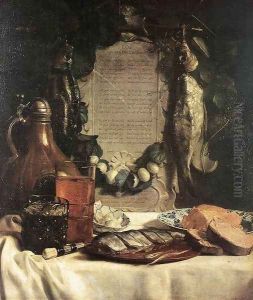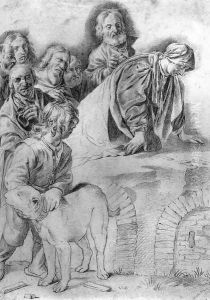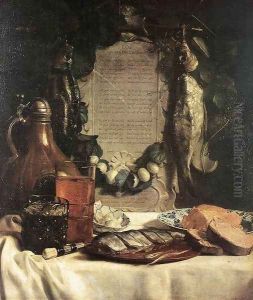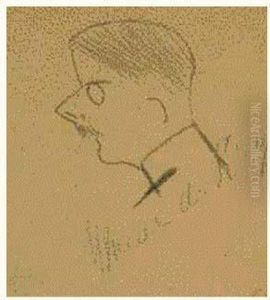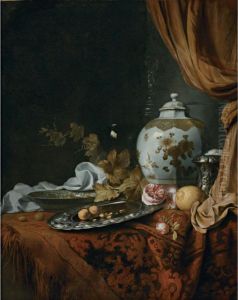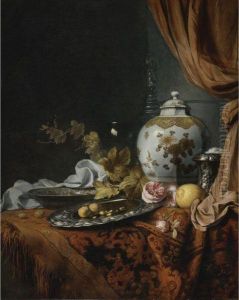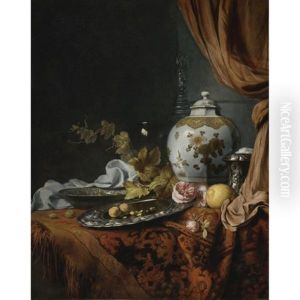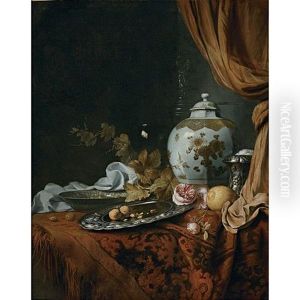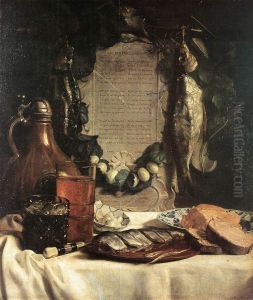Joseph de Bray Paintings
Joseph de Bray was a Dutch painter and draughtsman, born in 1627 in Haarlem, Netherlands, into a family of artists. His father, Salomon de Bray, was a renowned architect and painter, and his siblings, Jan, Dirck, and Jannetje, were also involved in the arts. This familial environment deeply influenced Joseph's artistic development and career. The de Bray family played a significant role in the Haarlem art scene of the 17th century, contributing significantly to the city's cultural heritage during the Dutch Golden Age.
Joseph de Bray specialized in still lifes and occasional genre scenes but is best known for his remarkable ability to imbue his works with a sense of intimacy and detail. His most celebrated pieces often include elements of vanitas, a common theme in Dutch Golden Age painting that reflects on the transient nature of earthly life and goods. Joseph's approach to this theme was nuanced, incorporating symbolic objects such as musical instruments, books, and food to suggest the fleeting pleasures and inherent vanity of worldly pursuits.
Despite his talent, Joseph de Bray's career was relatively short-lived; he died in 1664 at the age of 37. The exact circumstances of his death remain unclear, but his legacy is preserved through his surviving works and the contributions he made to the Dutch still life genre. Joseph's artistic style was characterized by a meticulous attention to detail, a rich palette, and a harmonious composition, elements that have allowed his work to be celebrated centuries after his death.
Joseph de Bray's contributions to art go beyond his individual achievements. His family's collective impact on the Dutch art scene of the 17th century was significant, with each member bringing their unique talents to the fore. Today, Joseph de Bray's work is recognized for its technical skill and emotional depth, offering insight into the cultural and philosophical preoccupations of his time. His paintings can be found in various museums and collections, serving as a testament to the enduring appeal of Dutch Golden Age painting.
